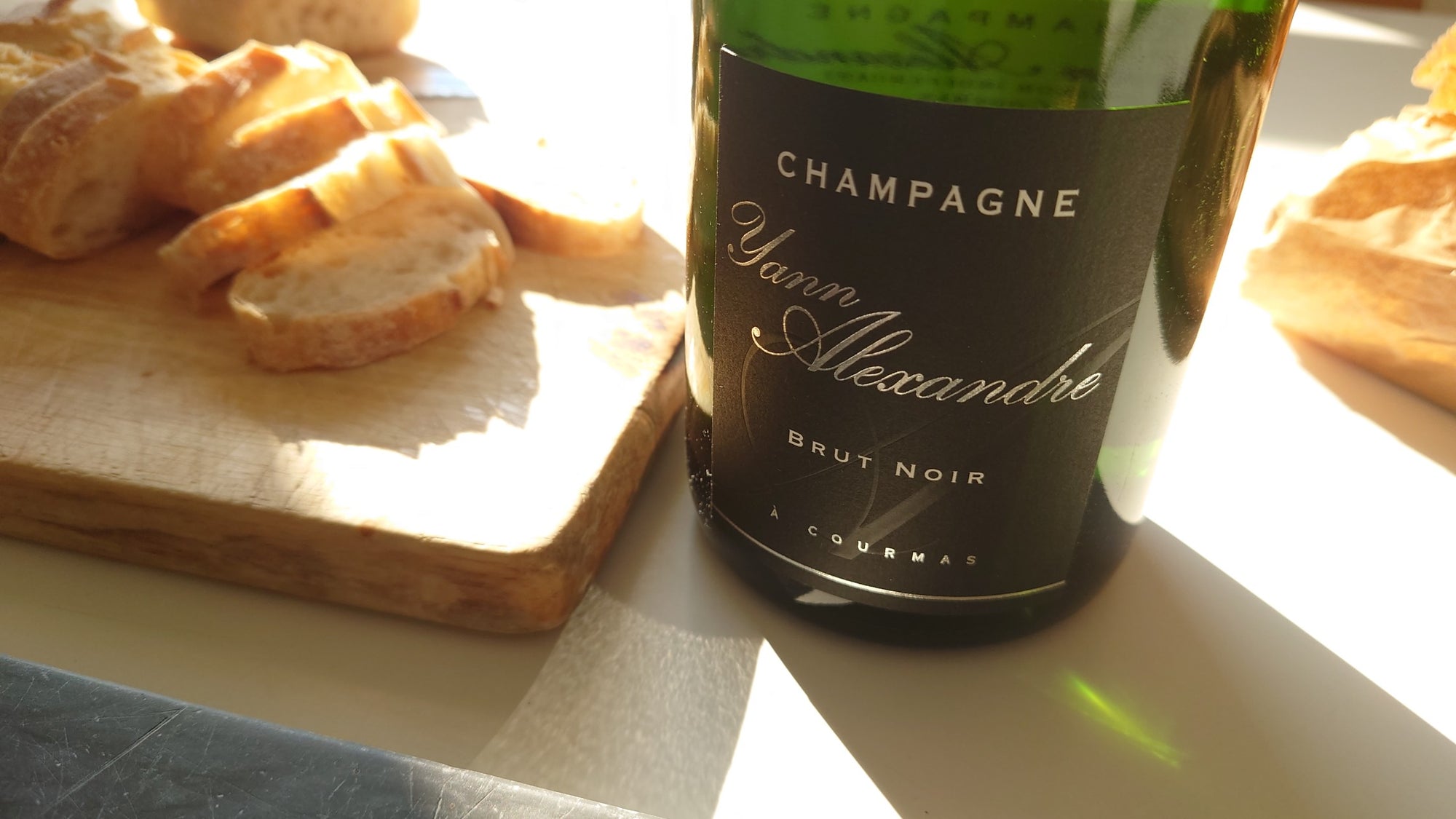 Nerello Mascalese with Mount Etna beyond
Nerello Mascalese with Mount Etna beyond
Notes from a recent educational trip to Etna with a bunch of other bloggers:
Traditionally, wine on Etna wasn't red or white, it was simply wine with all the grapes blended together. Barone di Villagrande introduced separately vinifying the red and white grapes on Etna in the 1850s.
Nerello Mascalese Nerello Mascalese is the uniquely aromatic grape that makes up the main part of Etna red wines. Etna Rosso DOC wines must have a minimum of 80% Nerello Mascalese. At first glance, its cluster could be mistaken for Pinot Noir, which also has small berries and a deep purple skin with pink highlights when ripening. They also both maintain high acid levels, flourish in cooler climates and are difficult to grow. But Nerello Mascalese has much thicker skins and can produce a much more tannic wine. Wines made from Nerrello Mascalese have a distinctive aroma and flavor that can be described as (I'll take a shot): almond/cherry liquor/herbal/red fruits and sometimes balsamic and/or menthol. They are usually pale to medium garnet and often have the a brick colored rim of an aged wine even when young. Their refreshing levels of acidity combined with their high tannins show the potential to age very well. Stranglely, the oldest Etna Rosso that I tried - a 1996 Patria Torrepalino - was more of a deep ruby color. Red wines usually get lighter and more brown with age. It also had the freshness of a much younger wine but doubt that this is a Rodenstock fake as there was fierce pile of sediment in the bottle.
Nerello Cappuccio Nerello Cappuccio is the minor blending grape for Etna red wines that adds color and fruit. Most Etna Rosso DOC wines will have between 10 to 20% (the maximum allowed) in the blend. While pure Nerello Mascallese is not unusual, Nerello Cappuccio is rarely made into a varietal wine, but Benanti has taken it upon themselves to make a 100% Nerello Cappuccio to show its characteristics. For a grape that's supposed to add color to a blend, the wine was surprisingly pale; a light ruby color. When I asked Guiseppe Benanti why he said that it is to make the color fresher and less brickish while adding some fruit. The standard line in most of the tastings was that the Cappuccio adds color and structure, like Colorino in Chianti or Graciano in Rioja. But it's not the case and Benanti demonstrated it clearly with the wine in the glass: bright ruby color, softly fruity - red fruits and strawberry - a grape to add charm, not backbone.
Carricante Carricante is the native and main grape in Etna white wines. According to star Etna winemaker Ciro Biondi Carricante means "abundant crop" in Italian. Usually a tough class of grape to be in. The high yielding vines of the world (ie Gamay, Chenin Blanc, Carignan, etc) were traditionally over-cropped therefore traditionally produced dilute and characterless wines. Currently only 8% of Etna wines are white, but the proportion is growing as the unique qualities of this grape are more understood. Etna pioneer Marco de Grazia came to Etna to produce red wines but was surprised with the potential quality of Carricante wines. According to him, Nerello Mascalese is difficult to grow but (relatively) easy to make wines from, while Carricante is just the opposite: easy to grow but difficult to make into a good wine. De Grazie's point comes across when tasting Etna Biancos. They were hard to pin down stylistically. Most were aromatic, but the specific aromas varied a lot, ranging from grapefruit to apple peel to lemon peel, herbal and almond and floral. The best whites had a distinctive waxiness, a little like Loire Chenin, and great minerality.
Catarratto Catarratto is the main white grape of Sicily but only plays a minor blending role in Etna Bianco. Other grape varieties grown on Etna, include reds: Alicante (Grenache), Rosso Minnella, Pinot Nero; and whites: Minnella, Trebbiano, Malvasia, Riesling, Gewürztraminer. Mostly played minor roles in blends but varietal Minnella, Gewürztraminer and Pinot Nero are also made.


Comments
Thanks – good summary. Appreciated your comments about Benanti’s Nerello Cappuccio. Their Nerello Mascalese and Carricante wines are superb – and the estate is magnifcent.
Really useful!
Two things of interest to me that are related.
I surprisingly was drawn to both the Etna Rossa and Etna Bianca blends. While usually a varietal lover, going towards pure grape 100% expression, not so with Etna. I was drawn towards the balance in the same fashion that I’m drawn towards Cerasuola as a ‘type’.
And…although everywhere is terroir specific in Etna, the whites especially where wackily different plot by plot, true in Etna Bianca as well.
Thanks for this really useful summary, Steve.
I attended a seminar in London at the Wines of Sicily today, which was about Sicily in general and focussing in particular on red grapes (but not Nero d’Avola, covered separately). It was presented by Angela Muir MW who was on the Master of Wine trip to Sicily earlier this year. She maintained that detailed research has now been done on all Sicily’s grape varieties, and all of them (except Frappato) can be linked to ‘family trees’ of grapes grown elsewhere in Europe. No doubt we will learn more when the new Grapes book from Jancis Robinson et. al. comes out shortly. In particular when talking about Nerello Cappuccio, Angela commented that it was a very close cousin to Carignan (and that would figure with its high colouring matter).
Hi Wink – thanks for the comment – the Sicily info is very interesting – I’m really looking forward to Jancis’ book as well
Hi Arnold – thank you! – we were really immersed in Etna, not just the grapes!
Thanks for this very useful, informative and concise article to add to the armoury of information about #etnawine.
However I think you have transposed the regions of a couple of varieties: Graciano is Rioja and Colorino, Chianti, not vice versa.
Hi Brett – thanks for pointing that out! All fixed now.
Thanks Brett! All fixed now!
[…] -Steve De Long […]
[…] – with some still awaiting identification. The main grape is the increasingly well regarded Nerello Mascalese, whose wines to me hover between Burgundian Pinot Noir and Piemontese Nebbiolo in style, but when […]
Steve – I’ve just received a copy of the new Wine Grapes tome, and according to that neither Nerello Cappuccio nor Nerello Mascalese appear to be definitely related to anything else (you will no doubt be able to read for yourself!) so whatever the MWs were told (including Angela Muir) on their trip earlier this year contradicts… there is no mention of Carignan in the Cappuccio entry. Interesting, research in 2009 revealed the Mascalese might be related to Carricante. So my comment above is fiction, apologies! But, the book does emphasize the mixed and confusing plantings. I think we must conclude that Etna has a rich ampelographical mix, don’t you think?